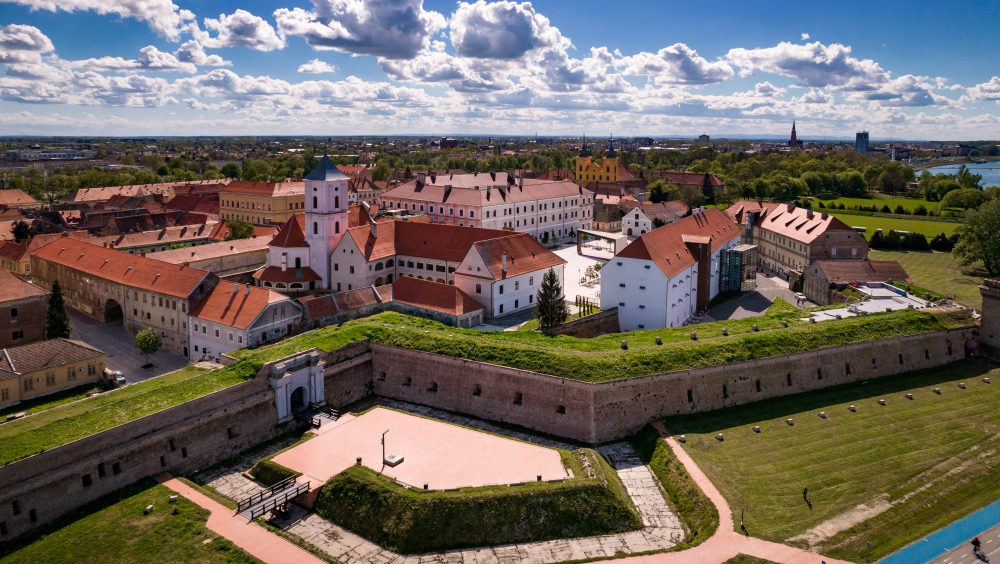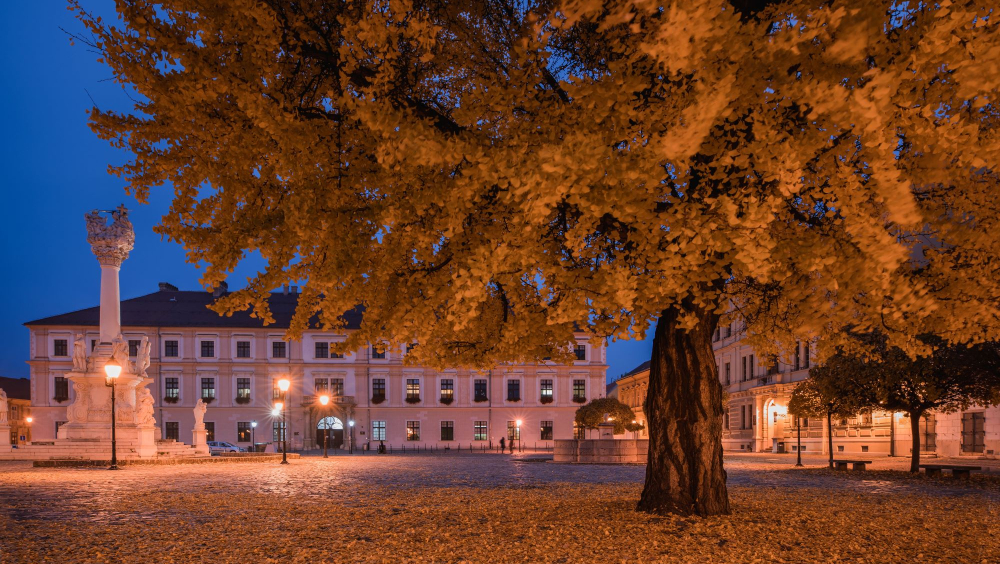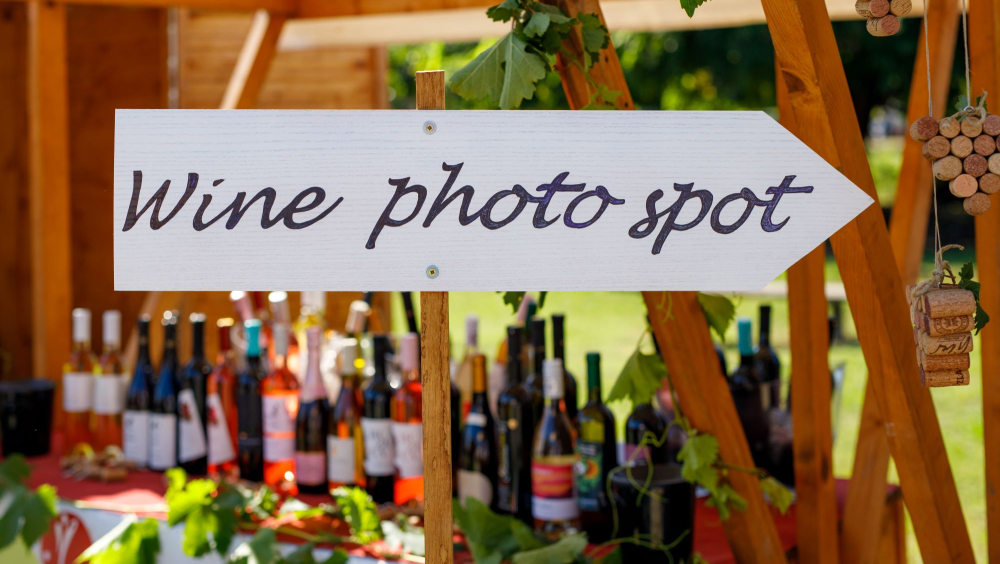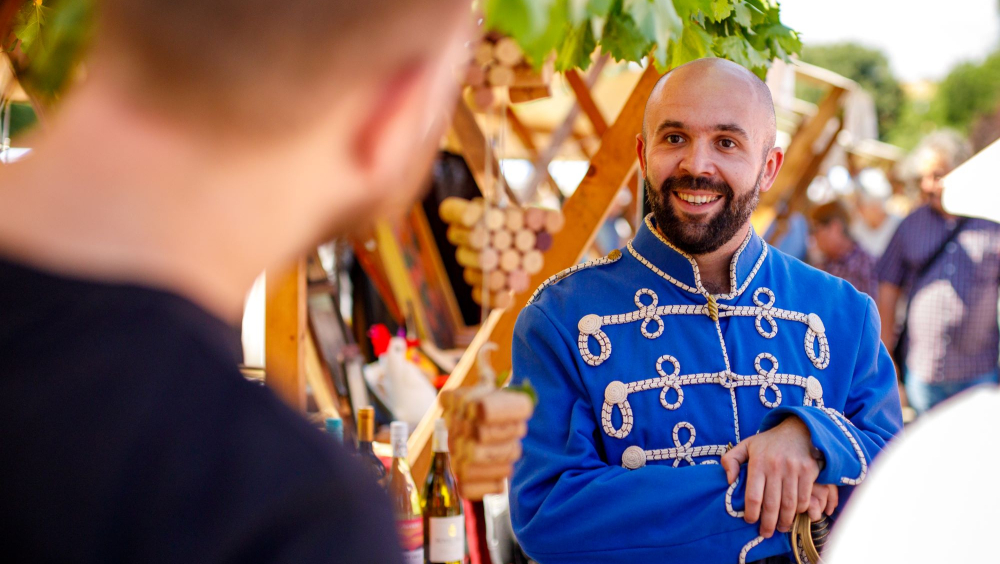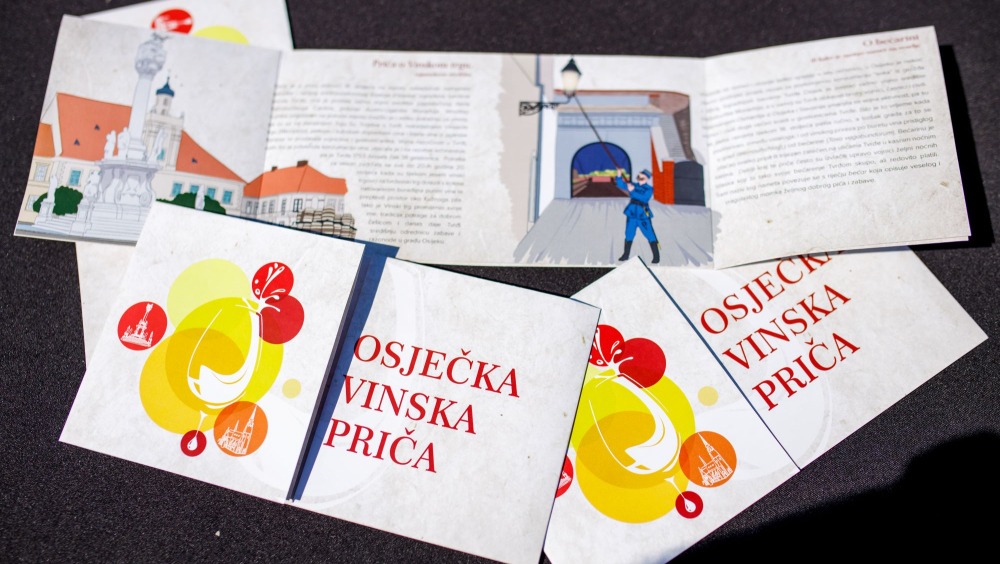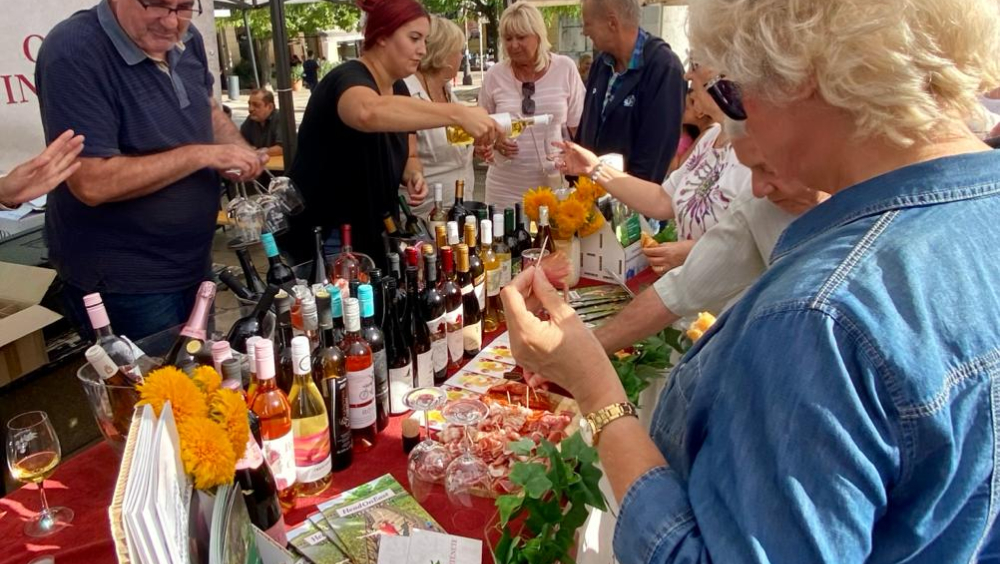The Wine Story of Osijek
Have you ever heard of Osijek, the urban center of Eastern Croatia? The charming city on the river Drava is known for its 18th-century baroque Citadel, built by the Habsburg army as one of its important strategic fortifications. Surrounded by wine-producing regions, the newly built Citadel became a place of an important wine fair that was held until the 1920s. Wine merchants would come to the main square (then called Wine Square) with wagons of barrels full of wine and flood the area around the Plague pillar that still stands today. The consummation of wine was quite popular among the soldiers, officers, and civilians, which is why in the 18th century the Citadel was full of inns. In order to take advantage of the fact that many people were visiting these inns when the sun went down, the city introduced a tax called “bećarina” which had to be paid by anyone drunk or sober found on the streets of the Citadel during nighttime. The money from this tax was necessary for the lightening of the public lights, which back in the day had to be lit manually. In order to revive the wine stories of Osijek such as these, this project aims to create an event that is conceived as a revival story of the history of wine consumption in Osijek through an urban wine walk. Urban Wine Walk is a guided wine-tasting experience designed for groups to enjoy along with the city's urban sights. Living history with real figures from the city’s multicultural past (like the Citadel’s builder Johann Stephan von Beckers), sightseeing, music, art, wine tasting, and much more await in Osijek, and its beautiful baroque Citadel that still stands today as a reminder of the city’s Habsburg and Austro-Hungarian past.
This is the story of the urban center of east Croatia, Osijek, and its fascinating tradition of wine consumption in its 18th-century Citadel. With this project, we want to revive interesting stories about the city’s wine heritage, dating back to when the Habsburg Monarchy's soldiers, officers, and civilians walked its streets.
The concept of the wine market has been associated with the city of Osijek since the beginning of the 18th century. When in the first half of the 18th century the baroque Citadel emerged on the site of the former Ottoman palanquin and earlier medieval town Eszeg (Osijek), it became an important military center of the south-eastern part of the Habsburg Empire, later the Austro-Hungarian Monarchy. The military presence in the Citadel, a big factor in the large consumption of wine, also influenced the development of innkeeping, which is why in 1753 the Citadel had as many as 38 inns. The wine fair was held until the 1920s when, during autumn, wine merchants came to the main square with wagons of barrels full of wine and flooded the area around the Plague pillar. Unsurprisingly, the square in mention was called Wine square (ger. Weinplatz), while today it is known as the Holy Trinity Square. Interestingly, the tradition of passionately enjoying a nightly cap has withstood the test of time, and the old Citadel was and remains a place of good fun.
Although it might seem impossible to put the words taxes and fun in the same sentence, Osijek once had a tax on nighttime adventures. When the old Citadel was built, the city became an important regional military center, populated by officers, soldiers, and civilians. With the defeat of the Ottomans and their retreat from Osijek and Slavonia, military activity decreased, so soldiers and civilians started spending their evenings in Citadel’s inns. At the time of the 18th century, public lighting was lit manually, and the expenses were paid from the wine surcharge per barrel of wine that arrived in the city (Weinaufschlag) and from the “bećarina” (Taxa vagabundorum). The “bećarina” tax was paid by anyone drunk or sober found on the streets of the Citadel late at night but mostly the many soldiers that were eager to go out in the evening. It is telling that the very name of this tax is associated with the word “bećar”, which describes a cheerful and mischievous guy ready for a good drink and a bit of fun.
Thanks to interesting stories and historical facts like the ones presented, we started a project that aims to revive the legends around the “bećarina“ tax and Wine Square. In 2022, the project aimed to make these stories known to a wider audience, create multilingual brochures, and make them come to life with the help of costumed presentations and wine tasting at local fairs.
This year, the project aims to create an event that is conceived as a revival story of the history of wine consumption and winemaking in Osijek through an urban wine walk. Urban Wine Walk is a guided wine-tasting experience designed for groups to enjoy along with the city's urban sights. To participate, the groups will have to pay “bećarina” tax instead of the registration fee.
We carefully picked up the stops along the wine walk, some of which represent the cultural and natural heritage of the city (such as the main square of Ante Starčević, Museum of fine arts, Parks of King Petar Krešimir and King Stjepan Držislav, Cultural Centre, and the Citadel), to create the ultimate wine-tasting experience featuring the most exciting sights – and all without leaving the inner-city area.
For this event to be even more exciting for the tasting palates, the “Service industry and tourism high school Osijek” and the sommeliers will prepare the gastronomic delights ready for consumption at the stopping points along the wine path. Every wine stop will also have a theme and offer entertainment or activity. For example, the Museum of fine arts will focus on combining wine tasting and artistic expression.
Since connecting the history, culture, and tradition of wines and winemaking is a focal point of this event, we will round off the event with the staging of the play „Living History” which will bring to life real historical characters from the 18th-century Citadel, like its builder Johann Stephan von Beckers. In the spirit of reviving the historical legacy, the final party (that will be open for all visitors and interested bypassers) will be held in the heart of the old Citadel, on the former Wine Square (today the square of the Holy Trinity).
At the wine stops and the final manifestation, visitors can taste the wines of “Osijek winemakers”. “Osijek winemakers” is a unique term that encompasses small and large producers who live in Osijek but whose vineyards and wine cellars can be found in Baranya and Erdut. Thanks to their tireless entrepreneurial spirit (and their own two hands), Osijek winemakers have successfully built recognizable brands in healthy competition and cooperation, with some of them continuing decades-long family traditions. Aside from the delicious wines of our Osijek winemakers, the visitors will have an opportunity also to taste the wines of Maribor winemakers. The city of Maribor is Osijek’s sisterly city, with both cities sharing many similarities, like their position on the same river (the Drava), similar baroque architectural heritage, and long tradition of wine consumption. The city of Maribor also gifted the city of Osijek with the oldest vine in the world in 2019, which is growing in the Park of Stjepan Držislav that will be one of the wine stops on the urban wine walk. For the attending professionals, the day before the manifestation a workshop (professional meeting) for sommeliers and other relevant professionals will be held as part of the event. It is worthing noting that the event will be supported by the society of the winemakers of Slavonia and Baranya “Graševina Croatica”.
The project contributes to the strong realization of the European dimension on several levels: cooperation at the local, regional, and cross-border levels, which is manifested by the participation of local and regional stakeholders in cooperation with Slovenian winemakers; the project will contribute to the promotion of cultural exchange of ideas, information, goods, and services between local/regional and Slovenian stakeholders at the workshops for sommeliers and entrepreneurs in the wine industry. The project will also include students of the “Service industry and tourism high school Osijek”, who will participate in the gastronomic offer together with top chefs and sommeliers as part of the event, where they will be able to improve their knowledge and skills.
Throughout the project, emphasis is placed on the participation of residents and visitors in the event itself. By including local interest groups (local musicians, actors, winemakers, small and medium-sized entrepreneurs, and local and cultural institutions) we are reviving the history of wine consumption in Osijek with respect to its historical role as an important Habsburg, and later Austro-Hungarian city in the 18th, 19th, and early 20th century. Also, the story’s European Dimension is present in aspects such as the people-centered activities (local stakeholders, wine producers, experts, social community. including youth), the links between heritage, history, and culture, and the vision of cultural heritage as a resource.
